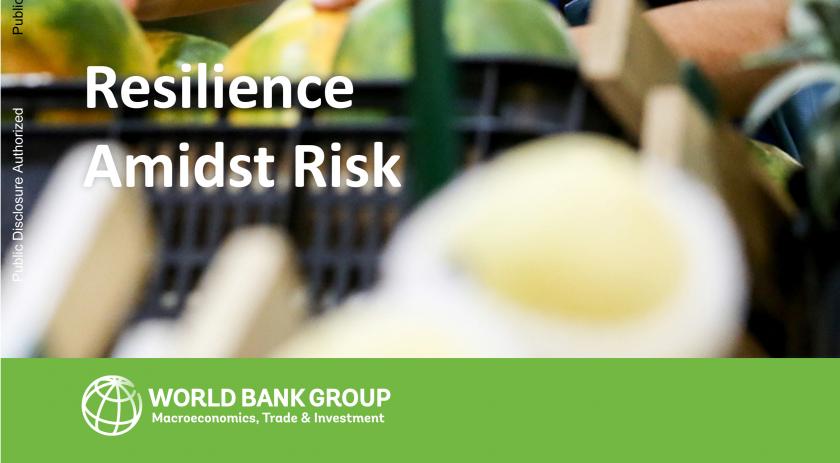
World Bank released its Myanmar Economic Monitor report – Resilience Amidst Risk – on Tuesday in Nay Pyi Daw.
According to the World Bank, Growth in Myanmar is expected to pick up to 6.4 percent in fiscal 2019-20 from 6.3pc in 2018-19 and 6.2 pc in 2017-18 as a result of the increasing government spending and private investments on infrastructure, transportation and communication.
PRESS RELEASE FROM WORLD BANK GROUP
YANGON, January 15, 2020 — Myanmar’s economy continues to show resilience despite the ongoing global slowdown and domestic uncertainties, according to a new World Bank report released today.
The Myanmar Economic Monitor for December 2019 estimates that Myanmar’s economy grew at 6.3 percent in 2018-19, marginally higher than 6.2 percent in 2017-18. Economic growth is expected to reach 6.4 percent in 2019-20, helped by growing investment in the transport and telecommunications sector and planned infrastructure spending by the government before the 2020 elections.
The service sector is the main driver of growth in Myanmar and is expected to grow by 8.4 percent in 2018-19. A slow recovery in tourism related services is offset by robust growth in wholesale and retail trade. The industrial sector is expected to grow by 6.4 percent, on the back of strong manufacturing growth offsetting slower growth in construction. Despite seasonal floods and volatile demand, agriculture output growth is projected to be stable at 1.6 percent, with greater diversification in production and export destinations, but remains below potential.
At the same time, it remains important to monitor domestic macroeconomic volatility. Since the June 2019 Myanmar Economic Monitor, headline inflation reached 10.4 percent in August 2019 as the important and carefully planned increase in electricity came on top of rising food prices. The report also points to continued insecurity and violence in border areas and the aftermath of the Rakhine crisis as factors that affect investors’ sentiment.
The report sees external downside risks to Myanmar’s economic outlook from slowing global and regional growth, along with trade tensions. Global growth is expected to slow to 2.4 percent in 2019 from 3.0 percent in 2018. Growth in the East Asia and Pacific region is projected to slow from 6.3 percent in 2018 to 5.8 percent on average over the two years 2019-20, and to ease further to 5.6 percent by 2021.
“Myanmar continues to experience robust growth but as the global economic environment deteriorates, the importance of domestic factors such as prevalent conflict, low private sector productivity, and institutional constraints challenge investor sentiment and hamper the country’s long-term prospects,” said Gevorg Sargsyan, Acting World Bank Country Director for Myanmar. “Urgent actions are needed to address sources of conflict, improve social inclusion, and foster a diversified and responsible private sector to sustain economic performance and set the foundation for Myanmar’s future prosperity.”
The report special topic looks at Myanmar’s rapidly growing private sector. According to the report, reforms have lifted Myanmar quickly in the recent World Bank Group Doing Business Index. But firms in Myanmar need greater access to inputs such as finance, land, and skills, better connectivity, and an enabling business environment to support a responsible private sector. The presence of armed actors and conflicts add challenges for business in much of Myanmar. The report recommends that polices should be geared towards private-sector led growth by fostering market expansion, improving the allocation of resources and developing the capacity of market participants.
The Myanmar Economic Monitor is a biannual analysis of economic developments, economic prospects and policy priorities in Myanmar. The publication draws on available data reported by the Government of Myanmar and additional information collected as part of the World Bank Group’s regular economic monitoring and policy dialogue.
| Name | Size | Type | |
|---|---|---|---|
| executive_summary_of_myanmar_economic_monitor_dec_2019.pdf | 1.07 MB | ||
| myanmar-economic-monitor-resilience-amidst-risk.pdf | 1.65 MB |












